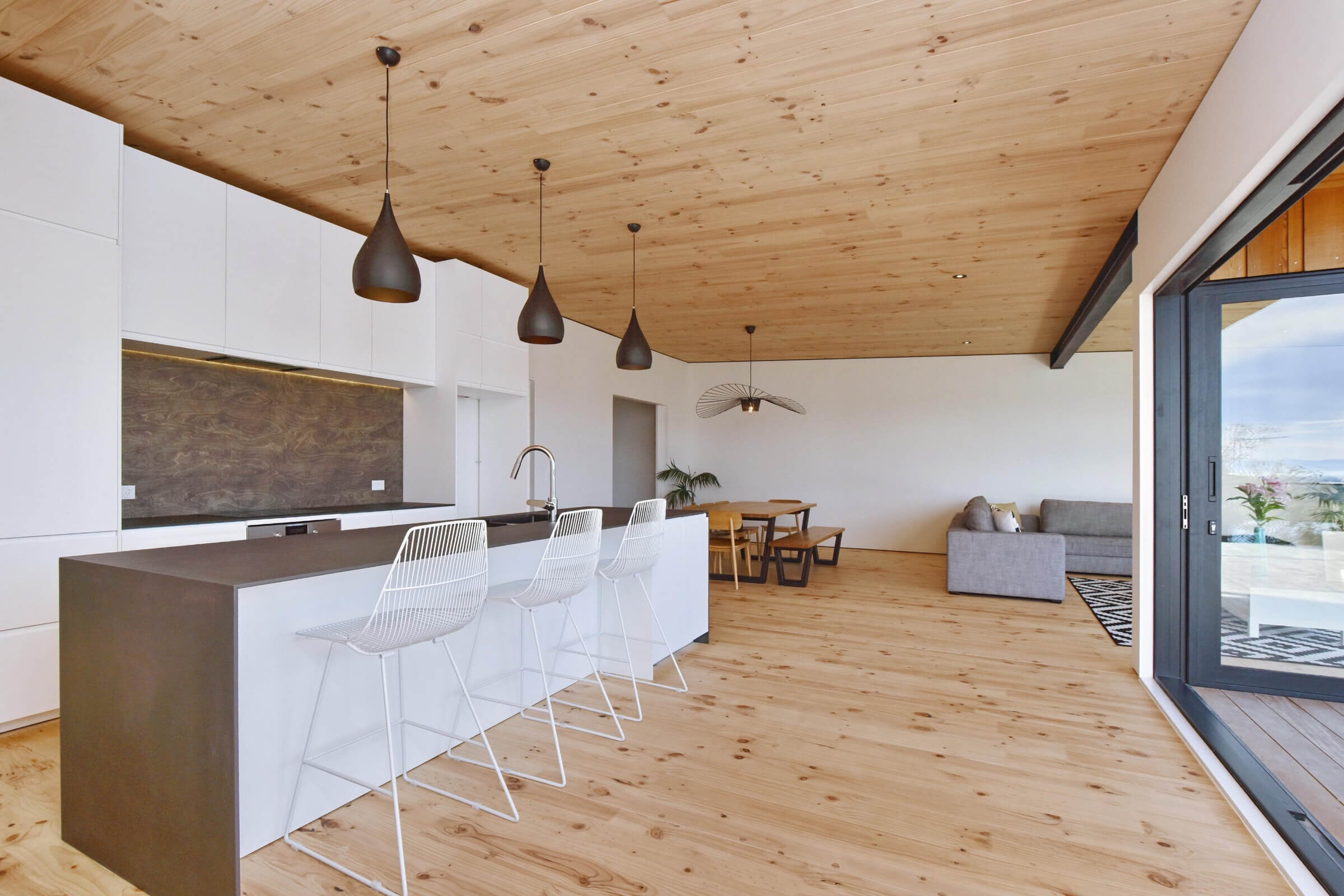
conventional construction (CLT + Steel & CONCRETE) Addington House
Client: Julian Addington
Architect:Julian Addington and Simon McCarthy
Structural Engineer:Engco
Head Contractor:Sam McCarthy
Location:Cannon Hill Crescent, Christchurch, NZ
Building Methodology:Hybrid: CLT & Steel
XLam CLT (22m3)
Owner and engineer, Julian Addington, was motivated to build a custom home in an earthquake-affected area of New Zealand using XLam Cross Laminated Timber (XLam CLT) due to its recognised structural performance, speed to site, sustainability, and aesthetic appeal.
As a structural engineer with extensive experience using XLam CLT on previous projects, Julian Addington, was inspired to build a predominately mass timber home in an earthquake-affected area on the Mount Pleasant hillside.
Due to the location, Julian was resolute on using mass timber given its advantage amid seismic events. XLam CLT buildings are significantly lighter than a comparably sized structures made of concrete and steel.
This means that the strength-to-weight ratio of XLam CLT reduces resistance to swaying and uplifting forces during an earthquake, while allowing the building to flex, which in turn minimises damage.
With the help of designer and head contractor Sam McCarthy, Julian focussed on refining the design and assembly process to maximise the cost benefits and speed of construction, while ensuring the end result was beautiful, sustainable and robust enough to withstand seismic events.
Upon completion of the build, Julian and his wife decided to place the property on the market and received an overwhelming amount of interest, resulting in an immediate sale.

Design & Structure
To overcome the challenging site, a pad foundation was laid to support steel posts, ties, and bearers. The long-span XLam CLT floor panels were then simply coach-screwed in place through the upper USB bearer flange.
XLam provided the XLam CLT panels with extruded polystyrene sheet insulation factory-fixed to the underside. Timber plates were also pre-fixed to the panels along the bearing lines, to protect the polystyrene from crushing during delivery and assembly and to provide direct fixing between the XLam CLT and steel bearers. This system proved highly effective and made for substantial labour savings on site.
‘I feel the style of construction here [Addington House] is the future of building in New Zealand by utilising our precious NZ timber resource, adding considerable value through prefabrication, and building in a way that’s fast, cost effective, sustainable and robust.’
Julian Addington Walls of the single storey house comprised mostly of open timber frame, with XLam CLT for feature walls and the entire roof structure. The assembly process proved exceptionally fast due to the care taken by Julian during the design and project organisation phases. For instance, placing and fixing the floor and roof each took less than a day.
Showcasing XLam CLT throughout the home wherever possible, Julian made the strategic choice to use non-visual quality panels for the floors to feature the full character of Radiata pine while effectively disguising any future wear and tear. Exposed XLam CLT panels were sanded and sealed post installation.
Outcome
XLam delivered a prefabricated solution that led to a fast, cost-effective and sustainable build. The lightweight and strong properties possessed by XLam CLT also allowed the designers to mitigate the primary challenge of this build, which was to construct a home robust enough to withstand the destructive effects brought about by seismic events.
Related case studies
-

The Seed House
-

Royd Clan’s House
-

Arvida Park Lane Retirement Village
-

Oakleigh South Child Care Centre












